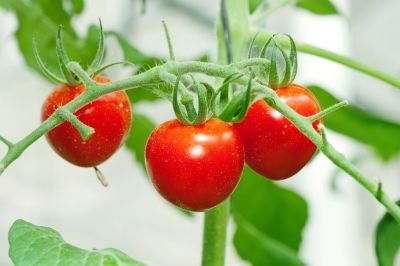 |
| Photo credit- foto76- freedigitalphotos.net |
There are many reasons to grow your own produce. It puts you in control of the quality of food you eat, meaning less exposure to nasty pesticides, not to mention food with higher nutrition and a much nicer taste. A lot of people turn to growing their own fruit and veg to slash their monthly food bills, and then are put off by the initial start-up cost of setting up a garden.
Whilst costs can run high, they don’t need to be. Greenhouse specialists Hartley Botanic have compiled these easy ways to save money when starting your garden so that everyone can rake in the benefits of growing their own produce.
Only buy what you need
It’s easy to be swayed by the latest gadgets that claim to help turn you into a champion gardener, but there is really only a few key tools you need to get started – a trowel, a rake, gardening gloves and scissors. This is enough to get you started, everything else you can get as and when you need it to spread the cost.
Buy second hand
Even buying just a few pieces of quality garden equipment can add up, so go for second hand tools to lower the cost. Buying a second hand, good quality tool is more of an investment than a cheap, brand new one. Check sites like eBay, Gumtree and Craiglist – there might even be some going for free if you can pick it up. Charity shops and thrift stores are also a good bet.
Use resources you already have
Growing vegetables and fruit requires well fertilised soil, but soil fertiliser can be costly. Instead, use household ingredients like egg shells, Epsom salts, coffee rinds, diluted tea water, fish tank water, banana peels and diluted white vinegar. If you can afford it, buying a compost bin is an excellent investment as it allows you to turn your kitchen waste into plant food. You can also create your own pesticide by combining garlic, cayenne pepper and water in a spray bottle.
Reduce plant costs
An obvious cost to starting your own vegetable and fruit garden is buying the seeds and plants in the first place. A good way of reducing this expense is by asking friends, family and neighbours for plant cuttings to lessen the burden. Berries, for example strawberries, grow perfectly fine from cuttings so if you know someone with lots of strawberries in their garden, ask!
Starter plants can be costly so purchase seeds and grow from scratch. Start the seedlings indoors to ensure they don’t have to battle poor weather, and once they’ve grown hardy enough to withstand weather conditions move them outside.
Do your research
In order to ensure you’re yearly costs are low, make sure you spend time researching which plants you want to grow. Choose hardy and disease resistant varieties to avoid failed crops, and look up how to care for your plants to ensure maximum growth. While there are plenty of good gardening books out there, there is a huge host of internet forums and discussions which are just as good, and cost nothing to read!
Avoid planting too much
Resist the urge to plant huge amounts in order to save money. Planting more than you can eat is a sure fire way of wasting food, and therefore money. Some vegetables like potatoes and carrots can last for months if stored correctly, so if you do end up with too many vegetables make sure you know how to store them properly!
Notes from Penny-
Another few points I would add would be to save seeds from plants you buy and grow them, instead of buying seeds. This works best with heirloom varieties, but not only.
When harvesting your greens like lettuce, chard, etc… no need to harvest the whole plant at one time. If you pick individual leaves you can get much more yield, as the plant will keep on growing, even after your first or tenth harvest.
When weeding your garden, first try to identify what the weed is- many times the weeds are edible, and then you’ve got some free food in addition to what you try to grow.
Be careful with watering- watering too much can raise your water bill a lot. Collecting rainwater in a rain barrel and using that to water your garden can help reduce these costs.
Do you garden? What do you grow, and how much?
What do you do to keep your gardening as low cost as possible? How much would you say you spend on gardening supplies each year?



